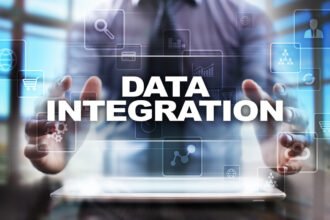 The third of the five biggest data myths debunked by Gartner is big data technology will eliminate the need for data integration.
The third of the five biggest data myths debunked by Gartner is big data technology will eliminate the need for data integration.
 The third of the five biggest data myths debunked by Gartner is big data technology will eliminate the need for data integration. The truth is big data technology excels at data acquisition, not data integration.
The third of the five biggest data myths debunked by Gartner is big data technology will eliminate the need for data integration. The truth is big data technology excels at data acquisition, not data integration.
This myth is rooted in what Gartner referred to as the schema on read approach used by big data technology to quickly acquire a variety of data from sources with multiple data formats.
This is best exemplified by the Hadoop Distributed File System (HDFS). Unlike the predefined, and therefore predictably structured, data formats required by relational databases, HDFS is schema-less. It just stores data files, and those data files can be in just about any format. Gartner explained that “many people believe this flexibility will enable end users to determine how to interpret any data asset on demand. It will also, they believe, provide data access tailored to individual users.”
While it was a great innovation to make data acquisition schema-less, more work has to be done to develop information because, as Gartner explained, “most information users rely significantly on schema on write scenarios in which data is described, content is prescribed, and there is agreement about the integrity of data and how it relates to the scenarios.”
It has always been true that whenever you acquire data in various formats, it has to be transformed into a common format before it can be further processed and put to use. After schema on read and before schema on write is the schema in between.
Data integration is the schema in between. It always has been. Big data technology has not changed this because, as I have previously blogged, data stored in HDFS is not automatically integrated. And it’s not just Hadoop. Data integration is not a natural by-product of any big data technology, which is one of the reasons why technology is only one aspect of a big data solution.
Just as it has always been, in between data acquisition and data usage there’s a lot that has to happen. Not just data integration, but data quality and data governance too. Big data technology doesn’t magically make any of these things happen. In fact, big data just makes us even more painfully aware there’s no magic behind data management’s curtain, just a lot of hard work.








